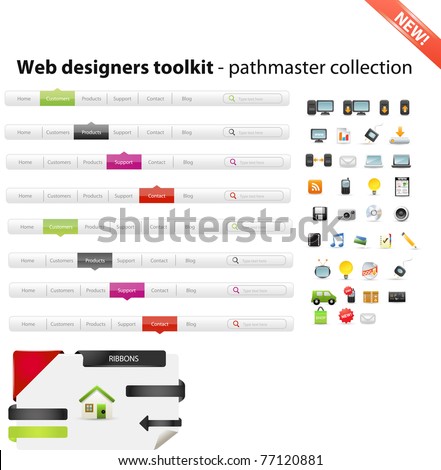Web Designers Toolkit Torrent


It would be impossible to document every frontend tool and workflow in an article. And even if we did, it would be overwhelming and a bit discouraging. We decided to outline a comprehensive tool belt, kitted out with some of the best equipment, and share a workflow that gives the tools meaning and context. These are definitely not the only right answers, but we've found them invaluable. As a frontend developer, a huge percentage of your time is spent in your editor. Since we take pride in the code we author, configuring a proper editor is the first step.
An Essential Toolkit to Further Your Design Career. You’ve asked us for a bundle that is clean, modern, professional and corporate. These are the types of resources. To make your web designs stand out for their functionality and aesthetics. Download Web Designers Toolkit and start testing each of its programs. USER REVIEWS. Get everything you need to build a WordPress web design business with the WordPress Web Designer's Toolkit. Web Designers Toolkit 2006, free and safe download. Web Designers Toolkit 2006 latest version: Script authoring tools for web developers.
The big two There are dozens of to choose from, but we want to focus in on two: and. Before you protest that we left off your favourite editor, hear us out. Our hope is that you take the time to learn the dark corners of your editor. Only then will you begin to alleviate pain points and become more productive.
Matlab 7.10.0 (r2010a) Download. Let's take a look at sublime Sublime Text, our first recommendation, is available on all three major operating systems, and it's blazing fast. Better yet, it has a thriving plugin ecosystem, so it's infinitely customisable. Here are a few essential Sublime plug-ins: • • • • Vim, Sublime's Ugly Cousin Vim is our second choice because it has a much steeper learning curve than Sublime: you might think of it as being the next level up. The power of Vim lies in its system of movements and macros. If you want to dive in and start understanding Vim's craziness, head over to your local command line and run vimtutor. After you've progressed through vimtutor, you can start cultivating your own.vimrc file.
The.vimrc is the configuration file for Vim, and is the place where you define all of your plug-ins and customisations. A couple well worth checking out are and, which just so happens to be from our co-worker,. Github's Atom editor shows promise as an extensible, comfortable editor Pick the right tool If neither Sublime nor Vim makes sense for you, here's a list of perfectly acceptable alternatives: • • • • As always, be ready to defend your decision, but be willing to admit it if you run into a superior tool. Stahls Pro Block Font Ttf Files. Find more great text editors for web designers. Protect your code with version control Writing code is hard enough.
Collaboration with other developers is harder yet. Typical collaboration tools fail when applied to code: email, USB drives, mounted network drives, and Dropbox shares are all great for sharing pictures, movies, or presentations. However, these tools offer no solution to the problem of multiple developers modifying the same codebase at the same time.
There has to be a better way! Illustration of a branch in a version control system (VCS) Version control to the rescue is 'a system that records changes to a file or set of files over time so that you can recall specific versions later'., and are all version control systems (VCS). They enable a group of devs to seamlessly contribute to the same codebase.
Let's learn some terminology 'Pull' is a download from a remote version control server. 'Push' is an upload to a remote server. Shugo Chara Episode Sub Indo. 'Branch' is a complete duplicate of the main code line. 'Merge' is taking a branch and merging its changes into another branch.
A 'conflict' is when the software cannot automatically merge two changesets together and you have to manually complete the merge. Now that we're all speaking the same language, let's dive in! The perfect source control workflow We use Git and a remote Git server such as. We love Git's effortless branching, blazing speed and superb reliability. We use GitHub or Bitbucket because they offer incredible features such as issue tracking, a place for discussions about the code, wiki hosting, and a Git remote server. Our workflow involves creating a branch for every change to the codebase.
These are commonly called 'feature branches'. If you want to contribute code to a project, clone the Git repository and create a new branch off the master branch. This new branch is your sandbox: your changes do not have any effect on the master branch. This enables you to experiment with the code – you can break things as much as you like. This feature branch is your own little version of the project! Once you are ready to share your hard work with the rest of your team, create a 'pull request' on GitHub.